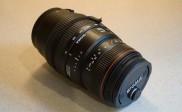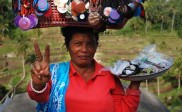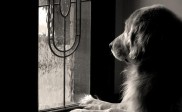A Helpful Guide to Flower Photography
If you’ve taken an interest in flower photography, this article is for you. We have gathered a list of interesting and helpful points to address when you are out taking pictures of flowers. Each point or question to ask yourself is a suggestion that may work for you but are always customizable to your exact needs, depending on where you’re photographing.
Preparation and Picking the right flower: To begin your flower photography journey, you must first pick your subject. In this case, it would be a flower or several flowers. To save you from a large hassle, you shouldn’t set up your equipment until after you’ve selected your subject. After you’ve selected your subject(s), you’ll begin assessing your lighting, shooting modes, and your composition. We’ll discuss these further below.

Photo by Photographymienn1
Composition: While there is no exact answer regarding the right place to shoot a flower from, there are certain aspects you should consider while making your composition. Typically, people choose to photograph flowers from the side or directly in the middle. There is no right or wrong, but to result in a compelling photograph, you should consider what you want to reveal before you start clicking.

Photo by Acutely
Identify your Focal Point: Ask yourself where do you want your viewers to look? What area of the photograph will they be drawn to and where to you want them to be drawn to? A good general guide to use in this instance would be the Rule of Thirds. Utilizing a narrow depth of field will also be beneficial. If you want to blur your background and/or foreground, increase your aperture (smallest numbers) in order to do so. You will also want to frame your subject tightly, either by zooming or by physically moving closer to it. Sometimes, creating an abstract photograph of a flower can be extremely visually stimulating. To do this, you’ll want to be as close as possible so that the flower fills the frame and may even go beyond it.

Photo by ericskiff
Lighting & Exposure: Lighting is a very important component to any type of photography and should be experimented with to get the image you want. When shooting flowers outdoors, the lighting can be overwhelming to your photograph and in this case, you may want to wait until the sun is beaming so brightly. Furthermore, it may be wise to experiment with flash, internal or external, to get the right lighting you want to achieve. However, using a flash can also cause your photograph to look washed out or overexposed. Another helpful addition to flash and lighting is reflectors. Reflectors can give a flower a natural and diffused illumination. To get the most out of a reflector, you should start by experimenting with different colors to see how they impact your shot.

Photo by Halvfiveish
Background: Typically, because you are outdoors you will only be able to shoot a flower from certain angles, thus limiting your movement. To be sure you’re capturing a compelling flower photo you need to have a clean and clear background absent of clutter. If there is clutter in the background, it can take away from your main subject which will impact its decrease in on-looker value.

Photo by Ericskiff
Macro Mode: Many digital cameras also feature a “Macro Mode” which is specifically designed to take up-close and detailed photographs. You would typically use macro mode when photographing a single flower versus a field of flowers. Also, if you own a DSLR camera capable of changing lenses, using a macro lens will be very beneficial.
AF Mode: Typically, all cameras are set on AF Mode but there are different settings within the AF Mode. AI Servo is sometimes beneficial if you have enough light, although it isn’t recommended for flower photography because Servo is generally used to track moving subjects. AI Focus or One shot will be your best bet. However, if AF Mode isn’t working for you, try switching it to M mode or “Manual Mode” to adjust the focusing yourself.

Photo by Alberello
Tripod: Minimized movement is extremely critical to getting a great flower photo. If you haven’t developed a steady hand, using a tripod is a very beneficial option. Tripods allow you to keep the shutter open for a longer period of time without movement, so that you are able to use all the lighting that is available to you.
Advantages of the Histogram: Most likely you are using a digital camera that includes a histogram in its features. Using the histogram can be quite beneficial if the lighting obstructs your view of the LCD screen. Histograms will help you to determine whether or not the photo is over or under exposed by displaying the light distribution of the framed subject. It may take some practice to reap the benefits of the histogram, but it certainly proves to be very helpful.
These suggestions will help you to make compelling flower photographs but most important is the message you are trying to convey. Try experimenting with reflectors, flash and different angles to see what you come up with. If you take pictures of flowers, what have you found to be helpful?
Top photo by Sara Heinrichs
For more examples of flower photography check 50 Inspirational Examples of Flower Photography





Sarah, is your guide only work for DSLR camera? what about just simple digital camera?
Hi Joan,
Yes, most “simple” digital cameras today have a macro mode.I have a Canon powershot. If you set it in “P” mode, you have the option inside that mode to set it to “macro,” “landscape” or “infinity.” In this case, I would set it to macro mode.
what kind of camera are you using? maybe I can help.
thank you for your comment!
-Sarah
Hi Sarah, I have Canon Powershot A630. Would it be enough?